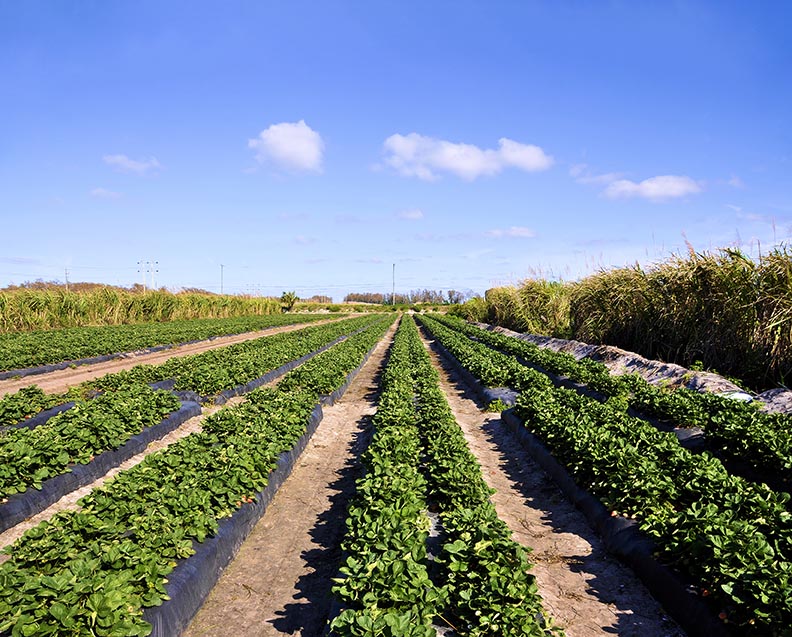RALEIGH – In order for strawberry producers to optimize growth, fruit quality and economic return of their crop, intensive and precise fertilization is required throughout the season. Plant tissue testing measures nutrient levels in the leaflets and compares them to established target concentrations for healthy strawberries. This analysis can reveal nutrient deficiencies and imbalances within the plant and allow growers to adjust fertility in response to changing crop needs. Plant tissue analysis in strawberry should include nitrogen (N), phosphorus (P), potassium (K), calcium (Ca), magnesium (Mg), and sulfur (S), iron (Fe), manganese (Mn), zinc (Zn), copper (Cu) and boron (B). In North Carolina, the most commonly encountered nutrient deficiencies in June-bearing strawberries are nitrogen, sulfur, magnesium and boron.
“Farmers have a lot riding on high-value crops such as strawberries, so using a combined strategy of pre-season soil testing and in-season plant tissue analysis is an inexpensive and highly effective approach to optimize both strawberry yield and quality,” said Kristin Hicks, section chief for the N.C. Department of Agriculture and Consumer Services Agronomic Services Division. “Testing takes the guess work out of troubleshooting issues with the crop and allows farmers to make adjustments to keep plants healthy and producing.”
How to collect a tissue sample. For routine in-season monitoring, plant tissue analysis should start when spring growth begins and continue every 1 to 2 weeks throughout blooming and fruiting stages. Plant tissue analysis is also useful if plants are showing signs of poor growth or health. These diagnostic samples can be collected at any growth stage and should include both samples of unhealthy and of healthy plants for comparison.

Select the most recently mature, trifoliate leaves (MRMLs). These leaves are full-sized, green and consist of one petiole (leaf stalk) with three leaflets. MRMLs are usually located three to five leaves back from the growing point and are neither newly emerging from the crown nor laying on the plastic. When MRMLs are being collected, it is very important to detach the petiole from the leaflets immediately.
Each sample should include leaves and petioles from 20 to 25 locations within a uniform area. For example, the plant material in a single sample should be the same variety, growing on the same soil type, at the same growth stage and having the same management history. When submitting tissue samples, be sure to include fertilization history and environmental conditions. In order to receive the correct interpretation, it is important to accurately report the growth stage (bloom or fruit) and the number of weeks since first bloom.
CONTACT:
Kristin Hicks, section chief
NCDA&CS Agronomic Services Division
919-664-1603









